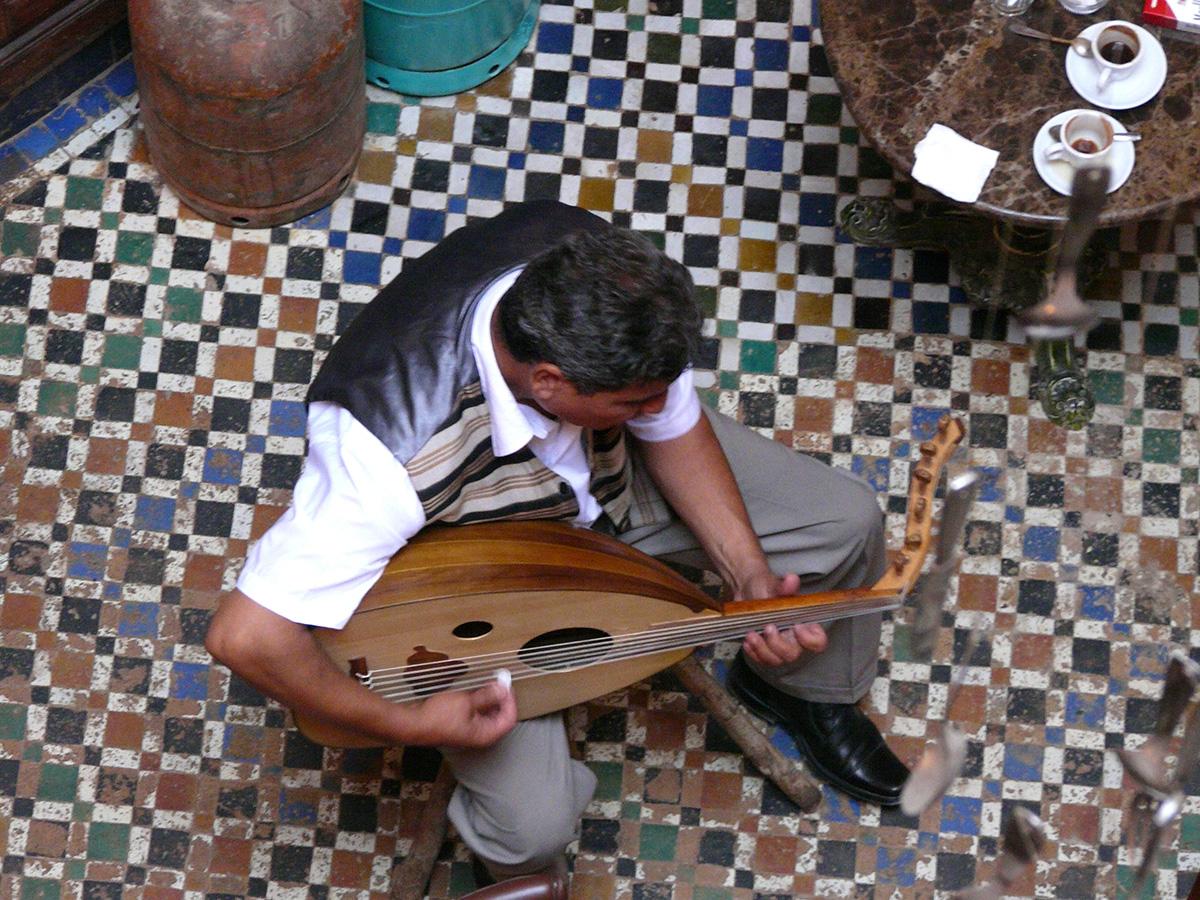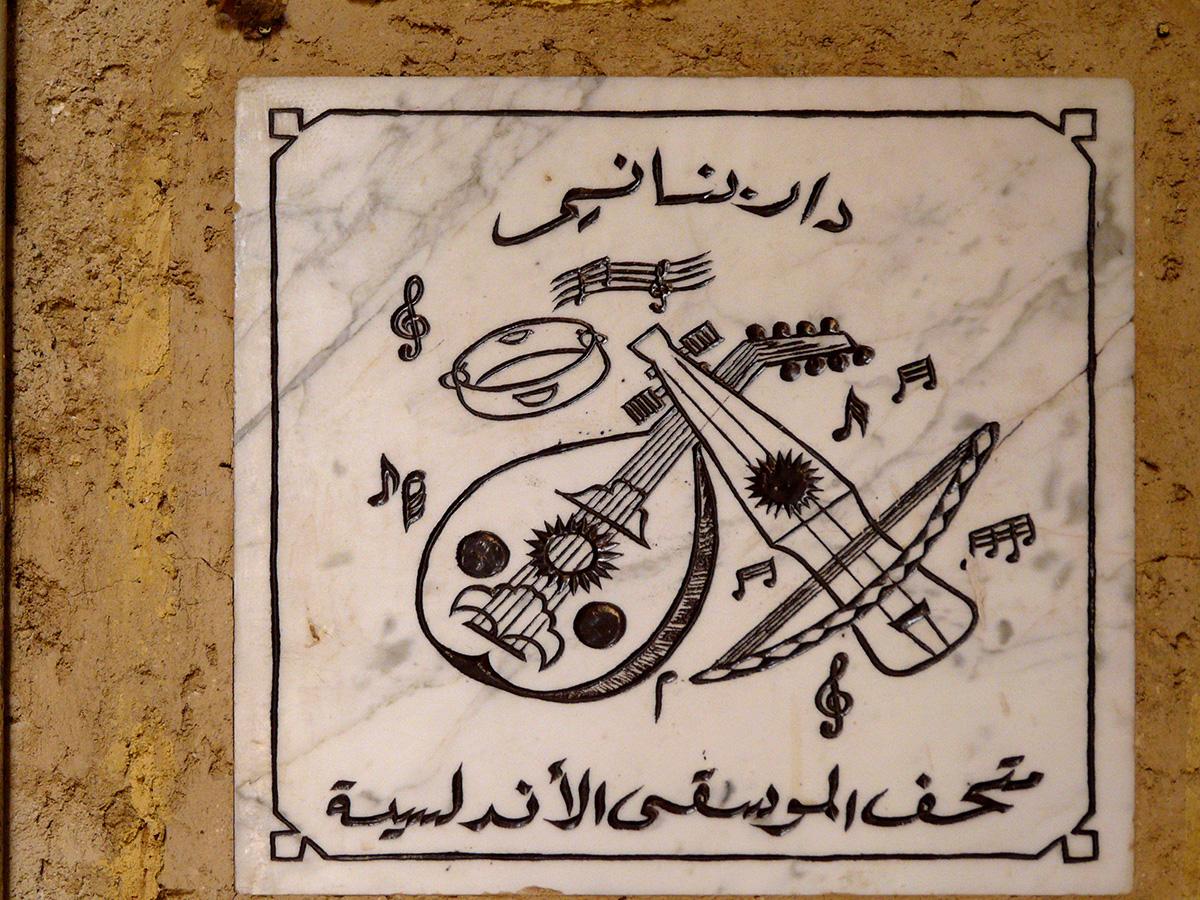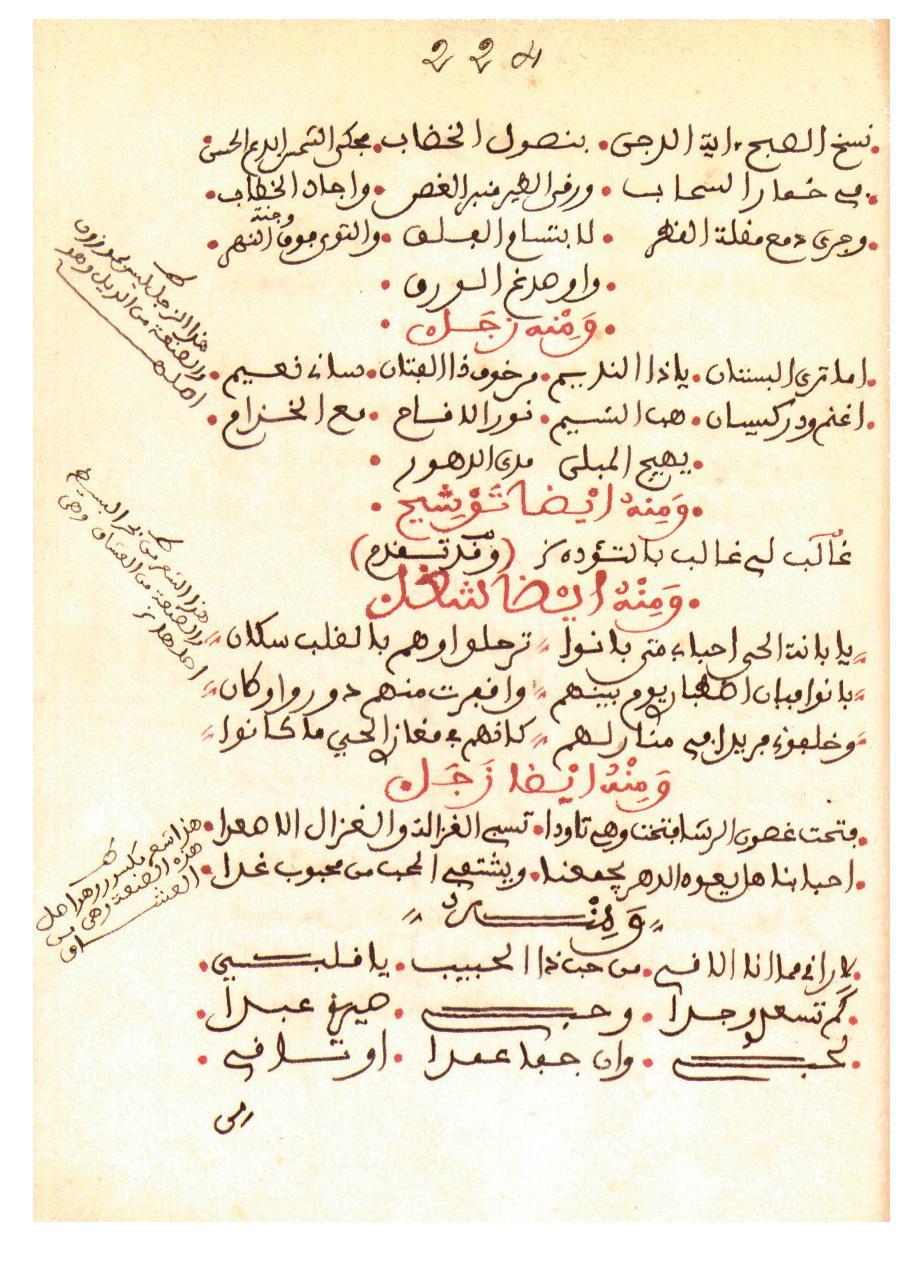
The Music of Al-Andalus, a Shared Heritage
Thanks to oral tradition, Arab-Andalusian music has survived through generations until today
Until the past few decades, the music from Al-Andalus was hardly known to any but specialists, or by curious music-lovers. Despite Arab music not being much known in Spain, in Andalusia it is perceived differently, as it is part of the cultural heritage of this region, the neighbour of North Africa, where the great musical legacy is stored. Here, there are many schools that preserve the musical legacies of Al-Andalus, whose differences respond to distinctive origins. In this way, the current Tunisian school has Sevillian roots, the Algerian school comes from Córdoba, and that of Fes from Valencia, although many of them have influences from the school of Granada. This is so because from the beginning of the XIII century, when Córdoba, Seville and Valencia were being conquered by the Christian armies, a mass exodus of people from Al-Andalus began, and they distributed themselves, to Tlemecen (Algeria) those who came from Córdoba, to Fes was where the ones from Valencia travelled, and Tunisia was the destination of Sevillians. Many others were established in Granada, a city that, because it was still ruled by a Muslim dynasty, the Nasrids, became the central point where the rest of the people from the disappearing Al-Andalus were to gather. Yet, after the fall of Granada, Morocco became the great recipient of Granadan emigrants, and major urban centres were created, such as Tetuan and Chaouen. Today, classical musicians from these cities proclaim themselves to be the heirs of the music from Granada in its highest degree of purity, all the while bearing in mind the city of Oujda, the traditional organiser of festivals of Garnatí music.
Musician playing in Fez in a coffee shop.
© Henry Kneuer. Fundación El legado andalusí.

The dissemination and knowledge of Andalusian musical roots has been made possible by the efforts of Andalusian musicians and institutions, like the Centro de Documentación Musical de Andalucía (Andalusia Music Documentation Center) based in Granada, el Circuito Andaluz de Música (the Andalusian Circuit of Music) and the Cultural Foundations El Legado andalusí and Las Tres Culturas. To this must be added the increasing interest of musicians of all styles in this type of music, despite the difficulties inherent in learning it or obtaining instruments. As for flamenco music, it is living brilliant moments, and fortunately, it has been for some time now no longer a music for minorities, thanks, without doubt, to the important contribution of the flamenco artists who were open to understanding music otherwise. This has been augmented by the coming together of musicians, resulting the fusion of styles without losing the essence and authenticity of the roots of flamenco. In this sense, the musical artists of Al-Andalus were pioneers in collaborating with flamenco artists, like the orchestras of Tangiers and Tetouan ̶ the latter under the direction of the late master Chekara ̶ and the contributions of El Lebrijano, José Heredia, Enrique Morente, and his daughter Estrella Morente, Lole and many more.
There are different theories about the origins of flamenco music. Regarding its historic affiliation, there is no doubt of the existing connection between the gypsies (flamencos) who arrived Granada in the 15th century and the Moorish minorities who immediately identified themselves with this ethnic group. Between both communities there was an immediate cohesion, an interaction fostered by their cultural similarities that drove them to become marginal groups from mainstream society: Castilians. Among the most striking similarities between gypsies and Moorish was the way of life, given the nomadic character of both peoples.
Plaque of the Fes Museum of Al-Andalus Music
© Henry Kneuer. Fundación El legado andalusí

óóhe disintegration of the Moorish culture was due to tensions of all kinds: political, economic, but above all religious, which transformed them into a persecuted and unrecognized people, and thus a wandering one. This facilitated the joining with other people who shared the same conditions in this respect, the gypsies. Religious beliefs were also a condition that meets a high level of parallelism in both cultures, as they coincide, for instance, in the fact that they both declared themselves to be Christians only formally, in many cases for self-interest, despite their religious faith and religious practices that were different. Yet it is in music where a true cultural marriage takes place. From the second half of the 16th century on, gypsies started to take part in religious festivals, as the Fiesta del Corpus Christi of Granada, which became a tradition. This practice was rooted in ancient times, when Moorish people were allowed to sing and dance in this Granadan religious celebration, and gypsies substituted them after they were expelled from Spain. They nevertheless kept their song themes, rhythms and instruments. According to chronicles, in the year 1640 they took part in the festival of the Immaculate Conception in Málaga, playing the tamborilio (drum), the adufe ̶ a sort of tambourine later played by gypsy women, whose use was already known in the Granadan community since the end of the 16th century ̶ together with other musical instruments. The gypsies’ music, their dance parties (zambras) were in great demand in popular celebrations, and they were favourites of the organizers of the feasts, being included in all their programmes. Gypsies introduced into their own traditions Moorish dances, which was already featured in a chronicle of the year 1605, when a group of gypsies hosted a reception for the ambassador Count of Nottingham with a “Moorish taste dance”, which reveals the deep assimilation of the Moorish culture by gypsies, and the cultural exchange it produced in both communities.
Musical production in Al-Andalus, dating from the 8th to the 16th century, is enriched by different cultural influences like the Mozarabic (Christians living in Arab kingdoms), the Visigoth and Byzantine rites, Berber music, Jewish and that of other countries from Middle and Near East.
In the era of Al-Andalus, under the Umayyad caliph Abd-er-Rahman II, Córdoba witnessed an amazing event. A musician known as Ziryab arrived to these lands to escape tensions in the court of Baghdad. He was the mentor of prince Harun al-Rashid, and he came to Córdoba and asked to the then-emir of Córdoba to work in his court, to which the dignitary consented. However, soon after the musicians arrived in the lands of Al Andalus, the ruler died, but his successor, his son Abd-er-Rahman II, had great success maintaining the contract for Ziryab’s services, which were many. In this way, many were the enterprises on which he was to embark, the most outstanding being the foundation in Córdoba of the first conservatory of the Arab World, as well as several music schools spread all over the Andalusian geography. All the sons of Ziryab were musicians and teachers, although among the males there was one, Obaila, who was a prominent singer in his day. His brothers Abd-er-Rahman, Kassim and Muhammad were equally renowned. Among his daughters, Alia continued the teaching tasks of her father, and she was in high demand as master of singing. That was how the whole entourage of the Baghdad master, sons, daughters and slaves ̶ like the ones of Abd-er-Rahman II, Met’aa and Masabih–, took part as a cast of teachers that made music in the 12th century a true matter of importance. According to historian Ibn Hayyan, “it is still a common practice in Spain that everyone who starts learning voice, starts by adding (recitation) backing vocals and percussion. Next, students started with simple chanting to continue their instruction ending with more rhythmical genres”. Ziryab introduced in Al-Andalus oriental harmonies of Greek-Persian origin where the seeds of the traditional music that were to appear later were shown. His contribution was especially important because he minimized improvisation in both rhythm and mode, which was a recurring practice when it comes to performing Arab-Andalusian song, and he established a series of premises to allow this art to be even more recognized. Historian Martín Moreno tells us that “Ziryab was the first composer of the Arab songs we know under the name of moaxajas. First rules that were introduced in the order of songs are also attributed to him. These are known in Turkey at present as
Kunnas al-Haik.
© Image of the Songbook known as Kunnas al-Ha’ik.

The Kunnas al-Haik is one of the most precious treasures of the Al-Andalus-Maghreb musical legacy. If it were not for oral tradition, the music of Al-Andalus would have not lasted until today. Songs have been transmitted through generations, and the making of musical instruments and their interpretation have been learnt by means of observation. However, before the existence of normalized written versions, this music may have been subjected to alteration, and even to being adapted to the musical tastes of the cultures that hosted it. This is the reason why traditional music has the enigmatic spell for being at the same time new and old. Yet, the oral tradition and the reprocessing of a music made by a given community is not the same in each culture. This will depend to a great extent on the value that every society place on its traditions. In Al-Andalus, this process spans almost the whole period of Muslim rule in Andalusia, from arrival (711) until soon after their exile (1601). The music of this period where different cultures and influences met, like the Mozarabic (Christian with Romanized elements, result of the influence of barbarian peoples and Visigoth and Byzantine rites), Berber music, and that of Jews and Arabs (coming out of countries of Middle and Near East), where this music has been preserved in the form of muwassahas, while in the Maghreb countries they have survived as the nubas of Al-Andalus and the Nasrid kingdom of Granada. This culture of oral transmission gave rise to its own poetic-musical compositions; it developed music theory, and it relied on countless narrative and literary sources. For its part, the music produced in the Maghreb is the great repository of the culture of Al-Andalus and thus its music, reflecting its modes, rhythms and music forms. Its own compositions, in both artistic or popular musical forms, being, nevertheless, of a high level of excellence.
The musical legacy has reached us in the form of songbooks or kunnas, that is to say, compilations of the poetic lyrics of songs or chants (or nubas) that have been preserved. These songbooks, according to the data they provide, are a very important tool to know the musical patrimony from Al-Andalus and North Africa, whose common basis is different from other modal music such as that of the Muslim East. But if there is a songbook that can be considered a true treasure, that is the one known as Kunnas al-Hai’k. It is about a manuscript from the 18th century, whose author, Muhammad al-Husayn al Ha’ik al-Titwani al-Andalusi, compiled the song lyrics of Al-Andalusi origin that were heard in his time. This document is considered the most complete repertoire by both the alior professional musician, and the mulu, or music lover. For example, it deals with the origins of the eleven nubas and the modes and rhythms in which they must be interpreted, the poetic and musical forms around the theme of the nuba or those that it generates: muwashshah and zajal, and also some eastern poetic styles such as the qasida. In the same way, it also provides information on the musical instruments, and refers also to the therapeutic effects that the nuba produces. The main purpose for al-Hai’k in writing his Kunnas was to transmit learning about concepts on poetry and music. However, in order to justify the subject before certain schools, he gave a somewhat sacred character to music by referring to it using quotations from the Koran and mentioning the powers of healing that listening to this music has on the human psyche. So, thanks to this document of incalculable value, we have been able to recover for future generations a musical legacy that today constitutes a reality shared by people from the other shore of the Mediterranean Sea. Taking into account that the oral transmission entails the problems above mentioned, Al-Andalus classical music would have not been consolidated if it were not for the compilation made by al-Hai’k, nor would been known the later contributions to it from the Maghreb.
Esteban Valdivieso García, musicologist.
Bibliography:
Valdivieso García, Esteban. Journal El legado andalusi. Una nueva sociedad mediterránea.
No 12. Year III/2000. 4th trimester. Consejería de Cultura de la Junta de Andalucía, ed, through Fundación El legado andalusí.
Footnotes:
1 y 2Martín Moreno, Historia de la Música de Andalucía.

